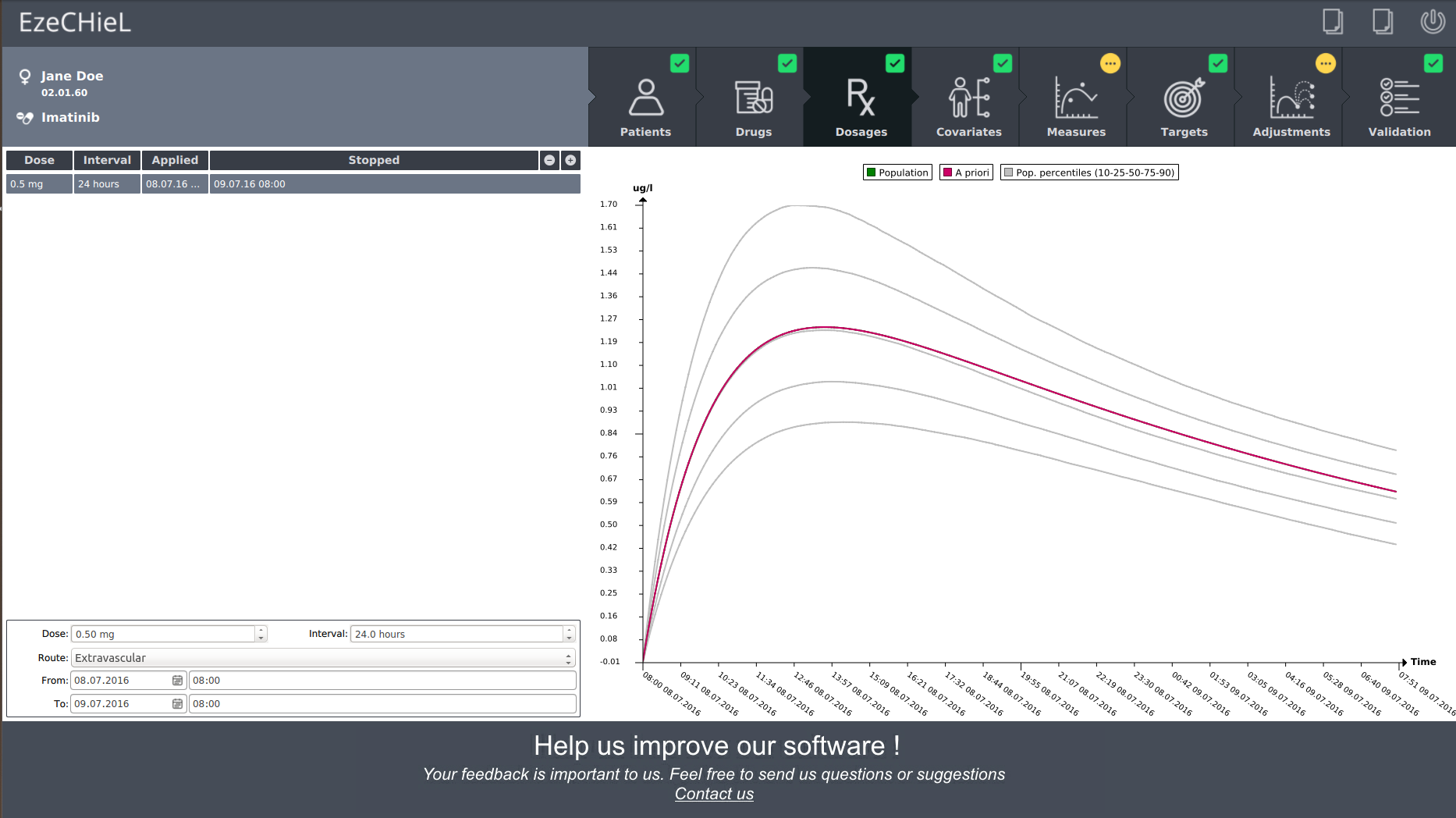History
By now the physicians adjust posology mainly by empirical method. The physicians basically give patients a quantity they think will correspond to the their needs and then measures the drug concentration to ensure they’re right or to adjust the posology. With this method every physician might give a different amount of drug because of their own past experiences and knowledge. But there are better ways to achieve this and one of them is to predict drug concentration by using models created with statistical data from population. These models need to be adapted to each patient in function of his medical history and his particular physiognomy. Ezechiel is a replacement for an Excel document made by Dr. Thierry Buclin and used by pharmacologists in CHUV until now. The doctors usually sent data to pharmacologists for them to analyze it and return the result afterward. Developing a real software from this Excel document will provide an enhanced tool for pharmacologists and enable doctors to use it thanks to an easy-to-understand graphical user interface. The first target is the long-term treatments where efficiency is needed. In these treatments a careful dosage is essential because of the potentially dangerous side effects.
EzeCHieL started as an academic software with the aim of offering a very flexible solution to help researchers and practicians in their daily practice. The following screenshot illustrates the look of this software.

Currently a new software is being developed so as to allow a certification as a medical device. The architecture has been totally modified in order to help with this process. The look and functionalities also changed in order to make it a more convenient tool for pharmacologists. The following screenshot illustrates the new look of the software.

This new software version is definitely following the daily practice of pharmacologists. They usually get interpretation requests for a specific patient under a certain medical treatment. So, the flow is the following:
- Validate the patient data (administrative, birthday, gender)
- Choose the drug treatment according to the information supplied by the medical doctor
- Add covariates of the patient that will help better predict a future concentration. Covariates are for instance the age, weight, gender, and more specific factors.
- Add measure values as supplied by the analysis lab
- Select the target values. These values are typically the concentration value expected after 24h.
- Let the software propose dosage adjustment in terms of dose amount and interval between two intakes.
- Fill the interpretation with comments for the medical doctor that asked for the interpretation.
- Generate a PDF report.